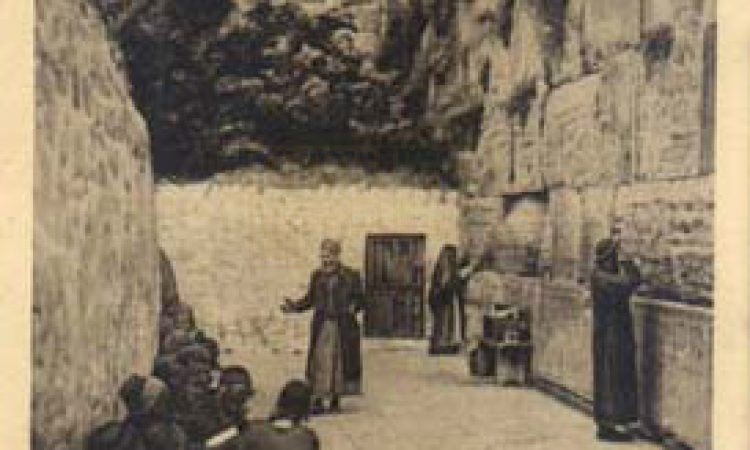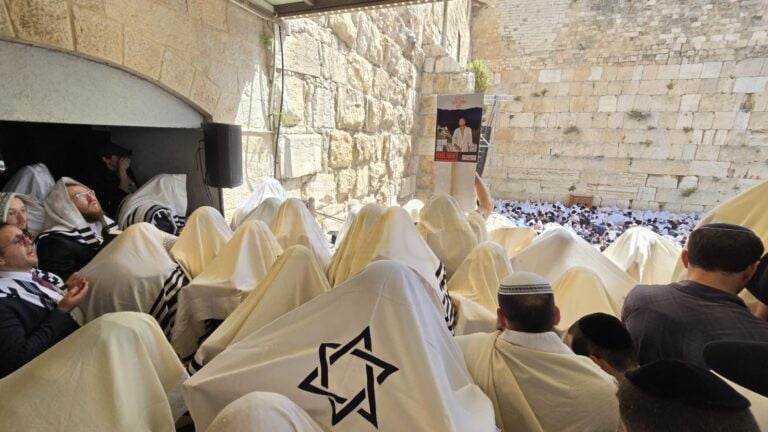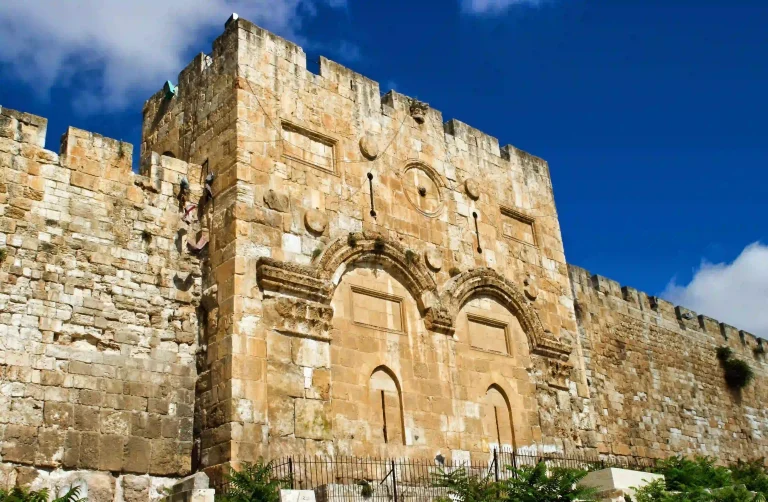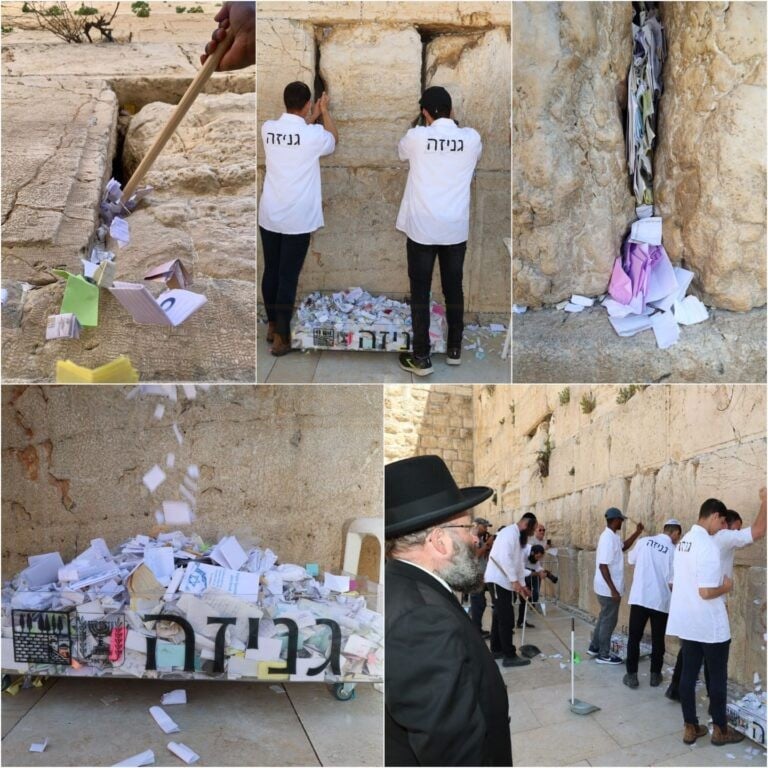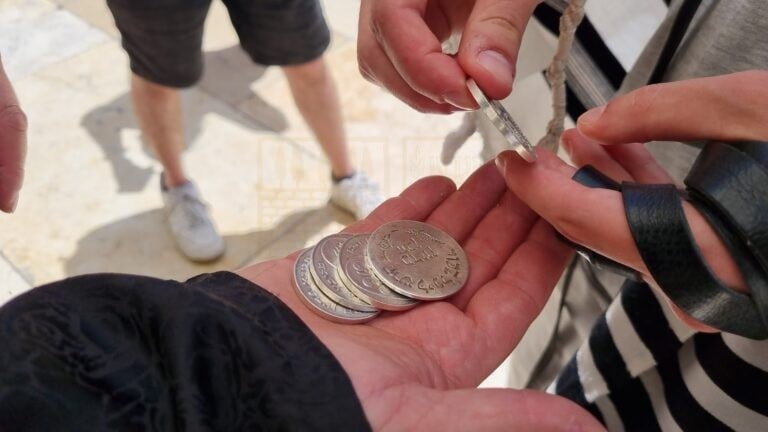|
Getting your Trinity Audio player ready...
|
Parshat Re’eh 5783
Rabbi Shmuel Rabinowitz, Rabbi of the Western Wall and Holy Sites
Parshat Re’eh, which is part of Moses’ great speech, mainly deals with the concentration of ritual worship at “the place which the Lord your G-d shall choose.” The Torah does not specify where this place is, but it clarifies that there is such a place that G-d will choose, and there, and there alone, the Temple is to be established.
Only centuries after Moses’ speech did it become known that “the place which the Lord your G-d shall choose” is Jerusalem, the place King David chose for the Temple, where Solomon built the Temple on the mount known since as the Temple Mount, where the Second Temple also stood until the first century CE, and since the destruction of the Temple, where we pray at the foot of the Mount, at the Western Wall.
The expression “the place which the Lord your G-d shall choose” is one of the proofs of the Torah’s antiquity, particularly the Book of Deuteronomy. If Deuteronomy had been written later, after the choice of Jerusalem and the construction of the Temple, we would expect that the name of Jerusalem would be mentioned clearly in connection with the chosen place, or at least in the past tense as “the place that the Lord chose.” However, that is not how it was written. It was not revealed at that time to Moses that the choice would be specifically in Jerusalem; and from the perspective of the people of Israel, the choice of Jerusalem had not yet been made.
In contrast with “the place which the Lord your G-d shall choose” in the future tense, at the beginning of the parasha, we read about a specific place that the Lord has already chosen. Moses says to the children of Israel:
Behold, I set before you today a blessing and a curse. The blessing, that you will heed the commandments of the Lord your G-d…and the curse, if you will not heed the commandments of the Lord your G-d…to follow other gods… And it will be, when the Lord, your G-d, will bring you to the land to which you come, to possess it, that you shall place those blessing upon Mount Gerizim, and those cursing upon Mount Ebal. Are they not on the other side of the Jordan, way beyond, in the direction of the sunset, in the land of the Canaanites, who dwell in the plain, opposite Gilgal, near the plains of Moreh?
(Deuteronomy 11, 26-30)
Moses instructs the children of Israel to hold a renewed covenant ceremony with G-d after entering the Land of Israel, a ceremony described in the Book of Joshua. However, the location of this ceremony is not in Jerusalem, but on two mountains in the center of the land: Mount Gerizim and Mount Ebal. Where are these mountains? Moses specifies their location exactly: on the western side of the Jordan, “in the direction of the sunset,” in the territory of the Canaanites living in the Arabah, near a place called Gilgal, and near another place called Alonei Moreh, the plains of Moreh. The people receive a precise geographical indication of the location of these mountains.
Indeed, we know the location of these two mountains in the center of the land, near the city of Shechem (Nablus). On Mount Ebal, a few years ago, an archaeological site was discovered, a ritual monument identified as an altar built by the Israelites after entering the land. But precisely in this context, we want to ask what is unique about these two mountains or their location that led to their selection as the site of a significant ceremony of the covenant between the children of Israel and G-d?
One of the identification details Moses gives for the location of Mount Ebal and Mount Gerizim is “near the plains of Moreh.” This place is mentioned once again in connection with Abraham’s journey from his homeland to the Land of Israel:
And Abram went…and they came to the land of Canaan. And Abram passed through the land, until the place of Shechem, until the plain of Moreh…And the Lord appeared to Abram, and He said, “To your seed I will give this land,” and there he built an altar to the Lord, Who had appeared to him.
(Genesis 12, 6-7)
The plain of Moreh is, therefore, a familiar place. It is the first place that Abraham arrived at in his journey to the land; it is the first place where the divine promise was given to him – that this land will be given to his descendants, the Jewish nation; and there was the first place where he built an altar to his G-d.
When the people of Israel enter the Land of Israel, they are required to remember that they are following in the footsteps of the first patriarch, Abraham. Therefore, they are required to hold the significant ceremony precisely in the place where Abraham arrived. The fulfillment of the promise takes place in the same place where it was given, for the consciousness of the children must be directed toward the fathers and toward following their path.
